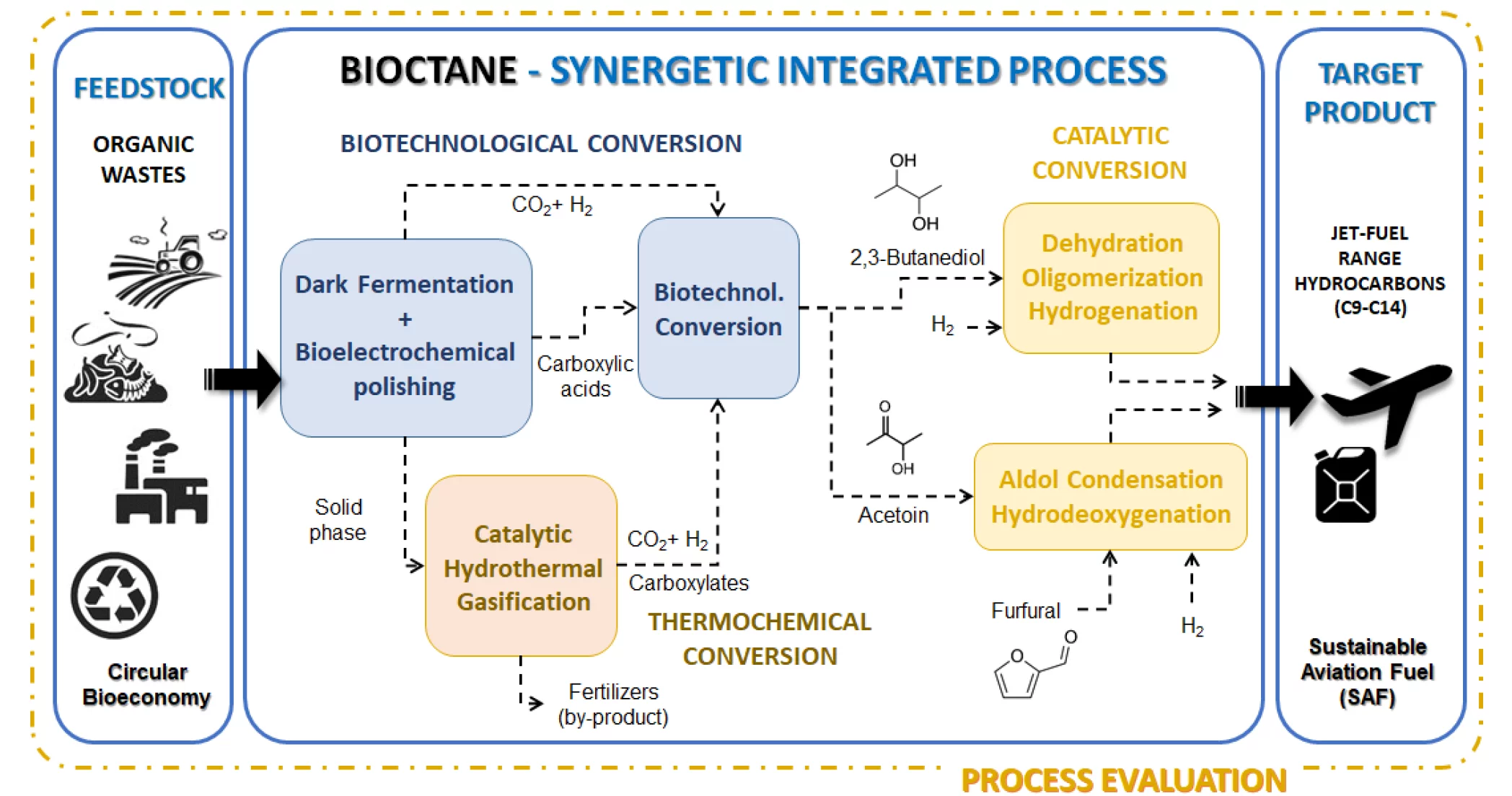Synergetic integration of BIOtechnology and thermochemical CaTalysis for the cAscade coNvErsion of organic waste to jet-fuel
Coworkers: Dr. Canio Scarfiello, Dr. David Baudouin
The BIOCTANE project aims to develop and optimize a process for the conversion of organic waste materials naturally characterized by a high-water content (e.g. food-waste, organic material from the food processing industry) into market-ready drop-in renewable fuels via integration of smart biotechnological and thermochemical conversion steps. The organic feedstock is firstly converted into a low diversity of biobased molecules by a robust mixed fermentation process; the produced biobased molecules are then used as feed for a subsequent biotechnological conversion step to the desired platform chemicals. The wet organic matter inaccessible by these two biotechnological conversion steps is thermochemically gasified under hydrothermal conditions (to avoid drying) to hydrogen (H2) and intermediate products, such as carboxylates, useable as an additional feedstock within the biotechnological conversion step to the desired platform chemicals. The produced chemical (acetoin or 2,3-butanediol) is then further processed into the desired fuel products (here: jet-fuel) based on catalyst-driven heat-induced thermochemical conversion steps.
In the framework of the BIOCTANE project, the main role of the CPE group concerns the conversion of the remaining organics from the dark fermentation step to a hydrogen-rich gas via catalytic hydrothermal gasification (cHTG), a well-known process documented in numerous publications and scaled up to pilot scale at the Paul Scherrer Institute (PSI). The main challenge will be to select and optimize the catalyst and the process conditions to selectively produce H2 at temperatures lower than or equal to 450°C, while minimizing the production of methane and carbon monoxide. To reach a high carbon efficiency of the overall process, the off gas from the process and the remaining liquids will be re-used within the biotechnological conversion steps.


